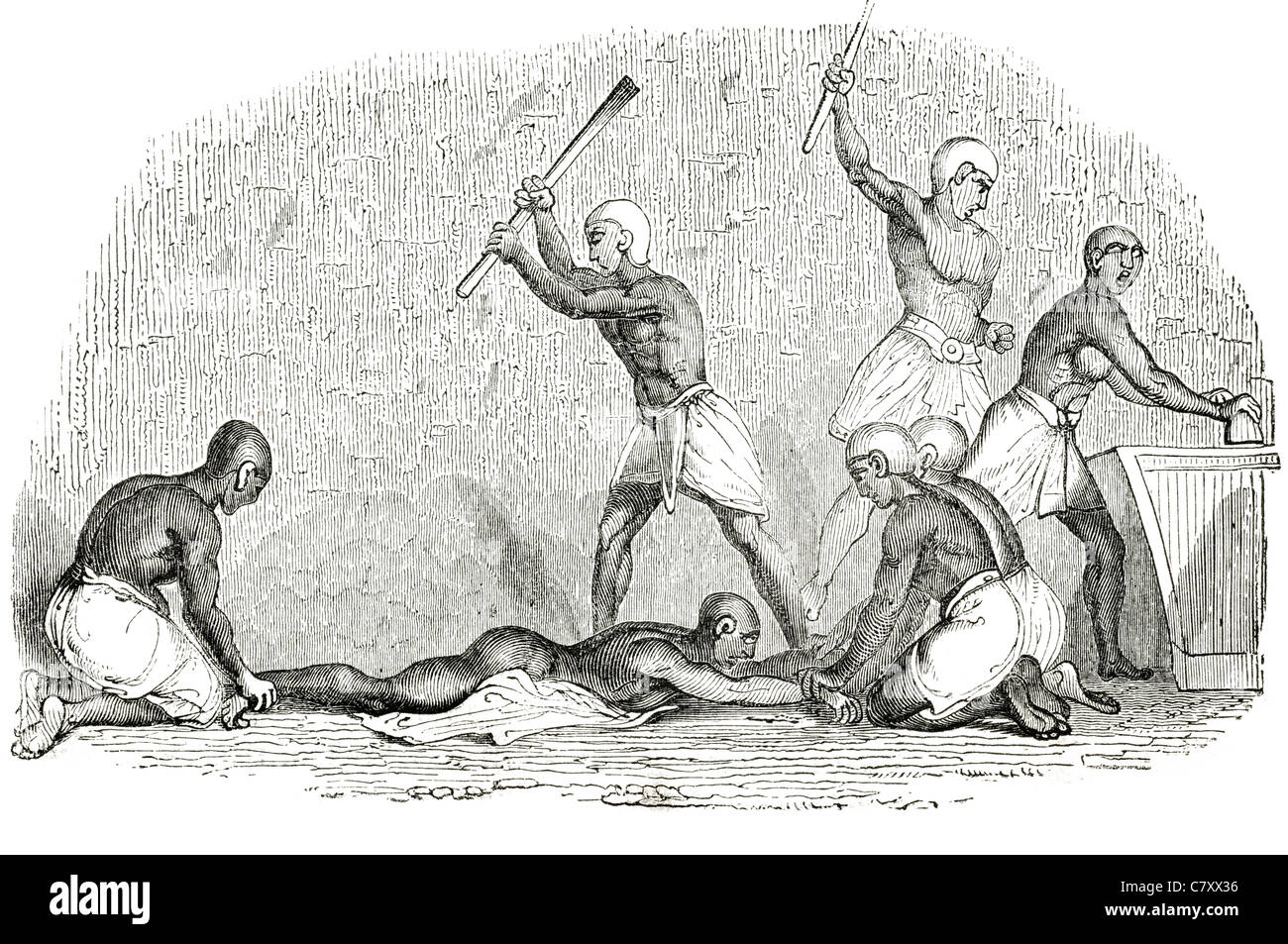egyptain bastinado torture tortured Foot whipping falanga corporal punishment cane rod whip bullwhip

Image details
Contributor:
SOTK2011 / Alamy Stock PhotoImage ID:
C7XX36File size:
38.5 MB (2.8 MB Compressed download)Releases:
Model - no | Property - noDo I need a release?Dimensions:
4502 x 2990 px | 38.1 x 25.3 cm | 15 x 10 inches | 300dpiDate taken:
2011More information:
Jesus of Nazareth (7–2 BC/BCE – 30–36 AD/CE), commonly referred to as Jesus Christ or simply as Jesus or Christ, is the central figure of Christianity. Most Christian denominations venerate him as God the Son incarnated and believe that he rose from the dead after being crucified. The principal sources of information regarding Jesus are the four canonical gospels, and most biblical scholars find them useful for reconstructing Jesus' life and teachings. Some scholars believe apocryphal texts such as the Gospel of Thomas and the Gospel of the Hebrews are also relevant. Foot whipping, variously known as bastinado, falanga (phalanga), and falaka (falaqa), is a form of corporal punishment in which the soles of the feet are beaten with an object such as a cane, rod or club, a stout leather bullwhip, or a flexible bat of heavy rubber. It is also sometimes favoured as a form of torture because although extremely painful, it leaves few physical marks. The prisoner may be immobilised before application of the beating by tying, securing the feet in stocks, locking the legs into an elevated position, or hanging upside-down. The Persian term falaka referred to a wooden plank which was used to secure the feet prior to beating. Foot whipping is effective due to the clustering of nerve endings in the feet and the structure of the foot, with its numerous small bones and tendons. The wounds inflicted are particularly painful and take a long time to heal, rendering it a particularly brutal and cruel punishment. This punishment has, at various times, been used in China, as well as the Middle East. It was used throughout the Ottoman Empire.